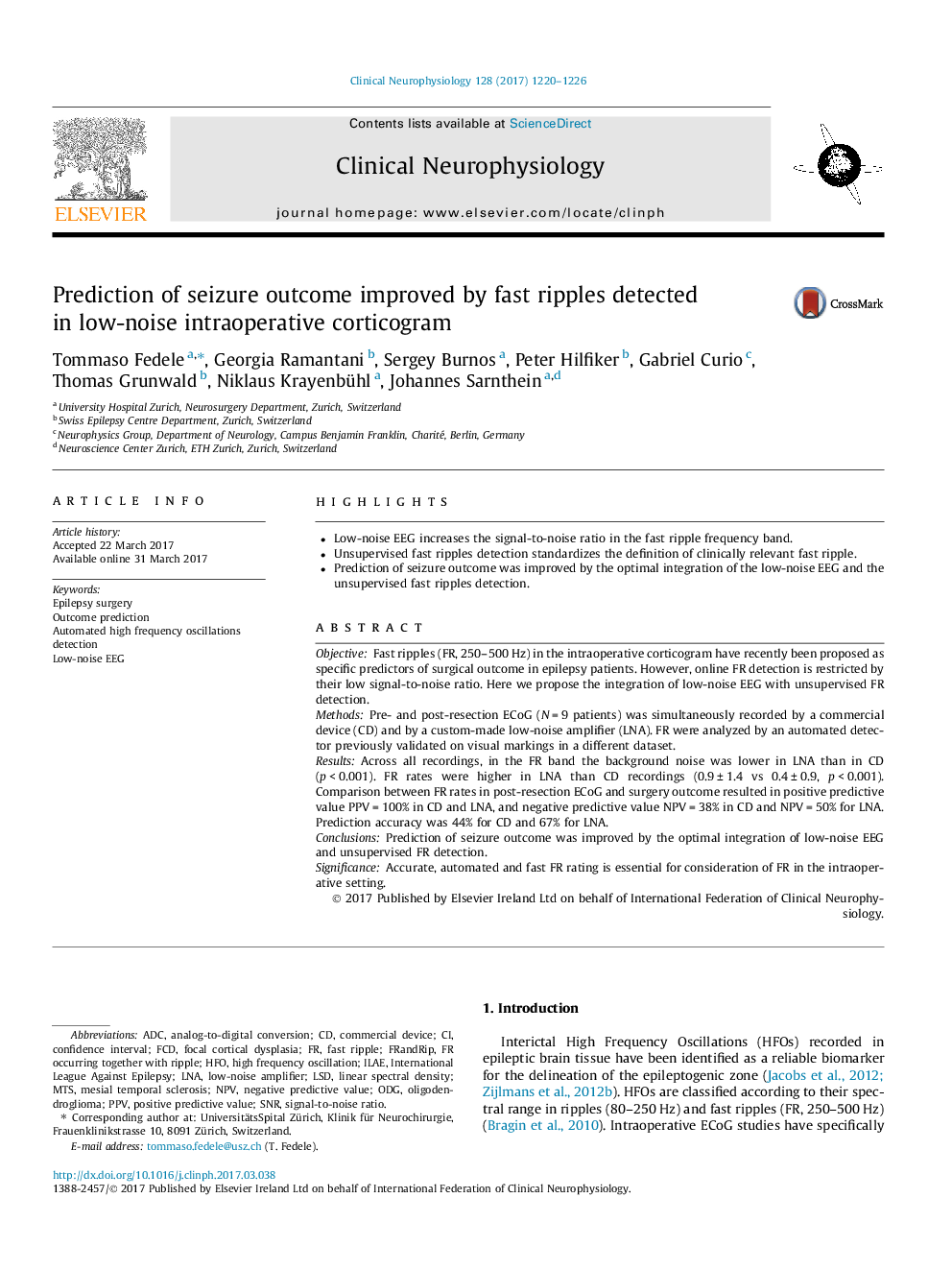| Article ID | Journal | Published Year | Pages | File Type |
|---|---|---|---|---|
| 5627823 | Clinical Neurophysiology | 2017 | 7 Pages |
â¢Low-noise EEG increases the signal-to-noise ratio in the fast ripple frequency band.â¢Unsupervised fast ripples detection standardizes the definition of clinically relevant fast ripple.â¢Prediction of seizure outcome was improved by the optimal integration of the low-noise EEG and the unsupervised fast ripples detection.
ObjectiveFast ripples (FR, 250-500 Hz) in the intraoperative corticogram have recently been proposed as specific predictors of surgical outcome in epilepsy patients. However, online FR detection is restricted by their low signal-to-noise ratio. Here we propose the integration of low-noise EEG with unsupervised FR detection.MethodsPre- and post-resection ECoG (N = 9 patients) was simultaneously recorded by a commercial device (CD) and by a custom-made low-noise amplifier (LNA). FR were analyzed by an automated detector previously validated on visual markings in a different dataset.ResultsAcross all recordings, in the FR band the background noise was lower in LNA than in CD (p < 0.001). FR rates were higher in LNA than CD recordings (0.9 ± 1.4 vs 0.4 ± 0.9, p < 0.001). Comparison between FR rates in post-resection ECoG and surgery outcome resulted in positive predictive value PPV = 100% in CD and LNA, and negative predictive value NPV = 38% in CD and NPV = 50% for LNA. Prediction accuracy was 44% for CD and 67% for LNA.ConclusionsPrediction of seizure outcome was improved by the optimal integration of low-noise EEG and unsupervised FR detection.SignificanceAccurate, automated and fast FR rating is essential for consideration of FR in the intraoperative setting.
